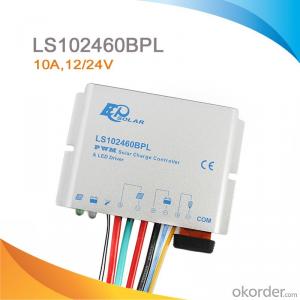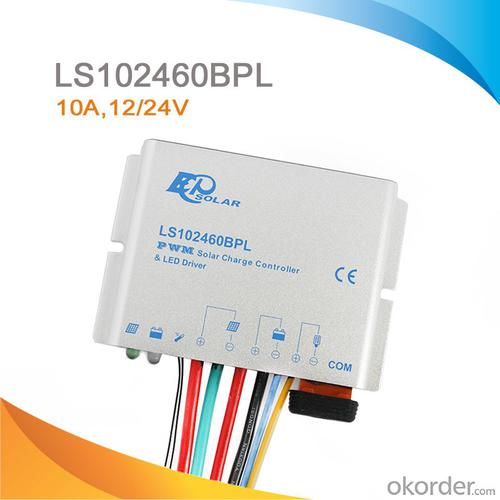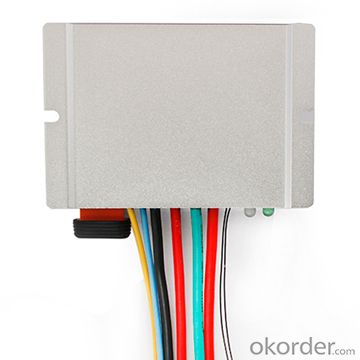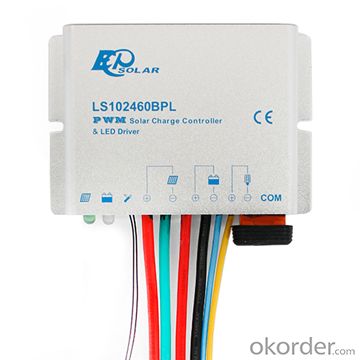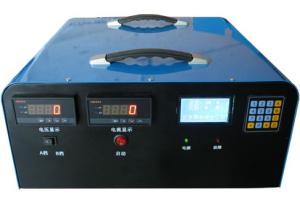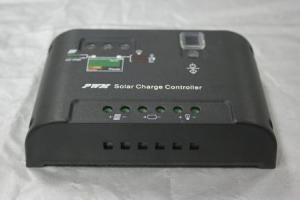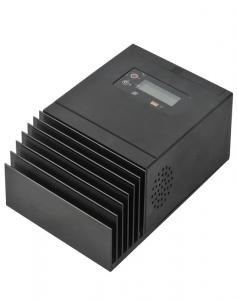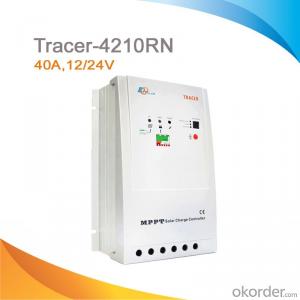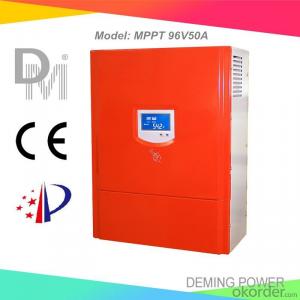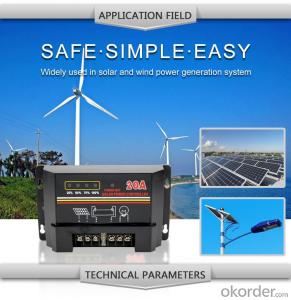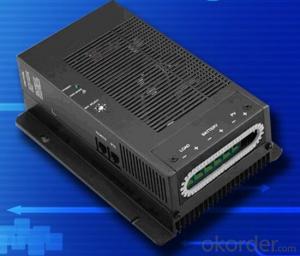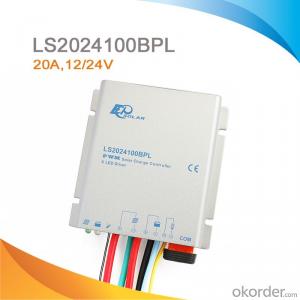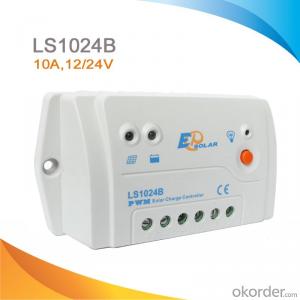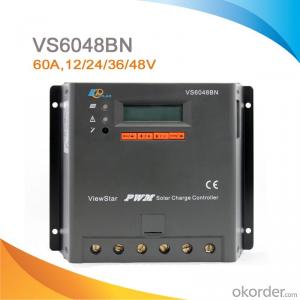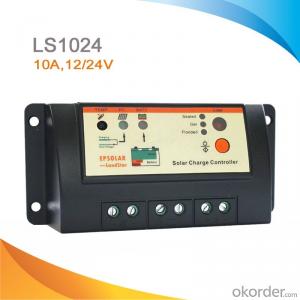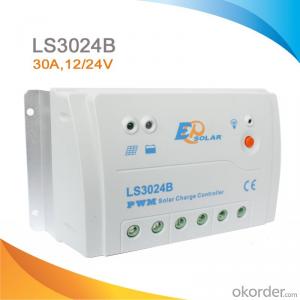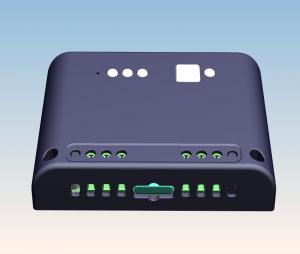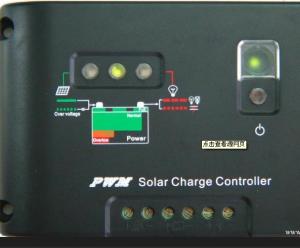Solar Charge Controllers Sudbury PWM Solar Charge Controller and LED Constant Current Driver 10A, 12/24V, LS102460BPL
OKorder Service Pledge
OKorder Financial Service
You Might Also Like
Descriptions:
A charge controller, or charge regulator is basically a voltage and/or current regulator to keep batteries from overcharging. It regulates the voltage and current coming from the solar panels going to the battery. Most "12 volt" panels put out about 16 to 20 volts, so if there is no regulation the batteries will be damaged from overcharging. Most batteries need around 14 to 14.5 volts to get fully charged.
LandStar BPL series solar charge controller combines the solar charge controller and LED constant current driver into one unit which is ideal for solar LED Lighting, especially for the application for LED lamp which requires dimmer function. It can also reduce the system cost and increase the system flexibility.
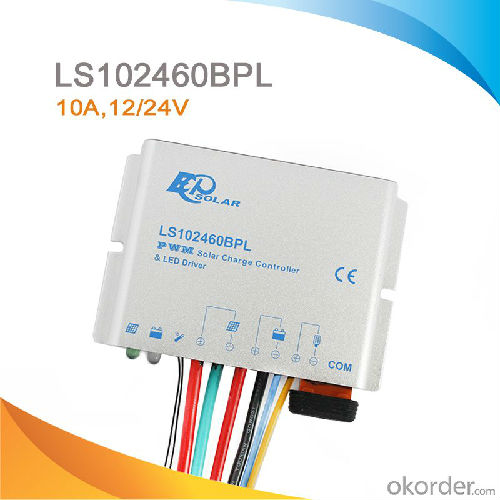
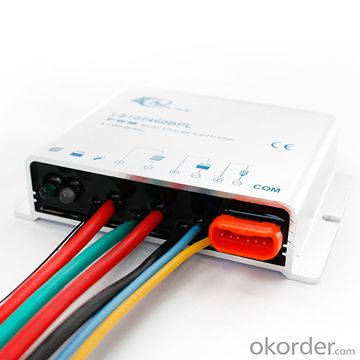
Features:
·12V/24V automatic identify or user-defined working voltage.
·Gel, Sealed, Flooded and user-defined battery type option.
·With functions of current power calculation, it is convenient to view charging and discharging energy of each day, month, year and total value.
·Wide input voltage range:DC8.0V—DC32V, compatible with 12V/24V full voltage range.
·Digital precision constant current control and the control accuracy are better than ± 2%.
·Maximum output efficiency of 95%.
·The rated output current can be adjusted at rated power and current range.
·The max output voltage can reach up to 60V
·Charge control parameter, the load control parameter and the output current value can
be set separately.
·Use of standard Modbus communication protocol for TTL232 bus connections,
communication protocol compatibility much better.
·Fully encapsulated PCB, IP67 protection.
·Aluminum housing.
Load control mode:
Manual, Light ON/OFF, Light ON+ Timer, Time Control
Electronic Protections:
·PV array short circuit
·PV reverse polarity
·High voltage transients
·Over discharge
·Overcharge
·Load overload
·Load short circuit
·Battery reverse polarity
·Overheating

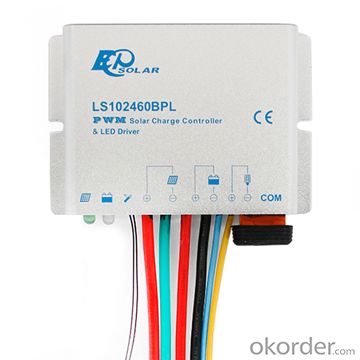
Specification:
Electrical parameters | LS102460BPL |
Nominal system voltage | 12 / 24VDC |
Battery terminal voltage | 8~32V |
Maximum PV input voltage | 50V |
Rated charge current | 10A |
Rated output power | 30W/12V, 60W/24V |
Rated output current | 2.0A |
Max. efficiency | 95% |
Output voltage range | Voltage of battery~60.0V |
Load open circle voltage | 60.0V |
Power output adjustment time | <10s |
Self-consumption | ≤9.1mA(12V); ≤7.0mA(24V) |
Control accuracy | < 2% |
Temp. compensation coefficient | -3mV/℃/2V(25℃) |
Enclosure | IP67 |
Dimension | 108.5x73x25.6 mm |
Power cable | 4mm2(PV/Batt.) 1.0mm2(Load) |
Net weight | 0.4kg |
Working temperature | -35℃ to +55℃ |
Humidity | ≤90%(NC) |
FAQ
The enclosure of charge controller:
If the controllers are used indoors or outdoors but with box, user can choose IP30 solar controller. For outdoor application, sometimes steam condenses to water when it touches a cold surface. And the water can come into controllers along with the wire. So it’s better to use high IP rating controller in humid area.
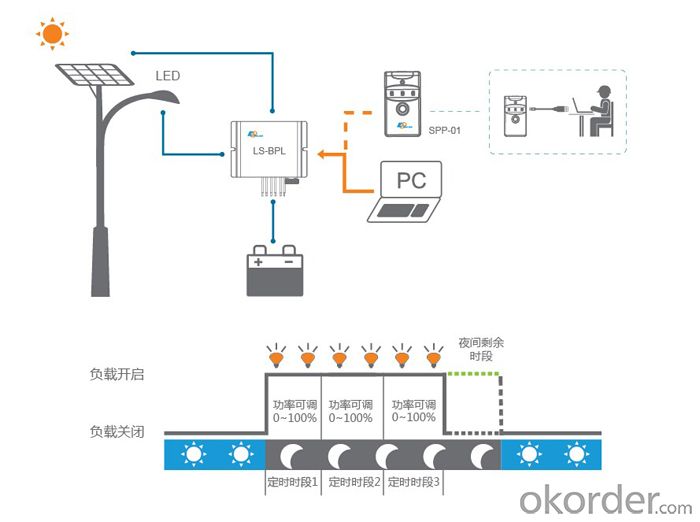
- Q: Can a solar controller be used with a portable solar panel setup?
- Yes, a solar controller can be used with a portable solar panel setup. A solar controller helps regulate the charging process, prevents overcharging, and optimizes the energy output from the solar panels. Whether it's a portable or fixed solar panel system, a solar controller is essential for efficient and safe operation.
- Q: Can a solar controller be used with a solar-powered outdoor lighting system?
- Yes, a solar controller can be used with a solar-powered outdoor lighting system. A solar controller helps regulate the charging and discharging of the solar battery, ensuring optimal performance and longevity of the lighting system. It also helps protect the battery from overcharging or deep discharging, maximizing the efficiency of the solar-powered lights.
- Q: Can a solar controller be used with solar-powered air quality monitoring stations?
- Yes, a solar controller can be used with solar-powered air quality monitoring stations. A solar controller is an essential component in a solar power system as it regulates the flow of electricity from the solar panels to the monitoring station and also prevents overcharging of batteries. In the case of solar-powered air quality monitoring stations, the solar controller would connect the solar panels to the station's power system, ensuring a steady supply of clean energy to operate the sensors, data loggers, and other components. This setup allows for continuous and sustainable monitoring of air quality, without relying on grid power or frequent battery replacement. Therefore, using a solar controller is highly recommended for solar-powered air quality monitoring stations to optimize their performance and ensure reliable operation.
- Q: Can a solar controller be used with solar-powered marine systems?
- Yes, a solar controller can be used with solar-powered marine systems. A solar controller helps regulate and optimize the charging process of batteries connected to solar panels. This is essential in marine systems as it helps protect the batteries from overcharging and provides efficient power management.
- Q: Can a solar controller be used with different types of solar panel mounting systems?
- Yes, a solar controller can be used with different types of solar panel mounting systems. The solar controller's main function is to regulate and optimize the charging of the batteries from the solar panels. It does not depend on the specific mounting system used for the solar panels. As long as the solar panels are connected to the solar controller, it can effectively manage the charging process regardless of the mounting system in place.
- Q: Can a solar controller be used in a solar-powered agricultural system?
- Yes, a solar controller can be used in a solar-powered agricultural system. A solar controller helps regulate the charging and discharging of solar batteries, ensuring optimal performance and prolonging battery life. In an agricultural system, a solar controller can effectively manage the power generated by solar panels, enabling efficient and reliable operation of various components such as irrigation systems, pumps, and sensors.
- Q: A solar controller 12v20A battery 12v 20A Will the number of tile solar panels need to be able to properly charge
- As long as the voltage is 12V, with more power battery panels can be affected only the problem of charging speed.
- Q: What is the role of a solar controller in preventing damage to the solar panels from power surges?
- The prevention of damage to solar panels from power surges is of utmost importance, and this is where the solar controller comes into play. Referred to as a charge controller as well, it acts as an intermediary between the solar panels and the battery or power grid. Its main objective is to ensure that the energy produced by the panels is stored or used efficiently and securely. One crucial function of the solar controller is safeguarding the solar panels from power surges. These surges occur when there is a sudden surge in voltage, which may be caused by lightning strikes, fluctuations in the power grid, or other external factors. These unforeseen events can have detrimental effects on the delicate electronic components of the solar panels, greatly reducing their lifespan or rendering them completely useless. To prevent damage from power surges, the solar controller effectively manages the flow of electricity from the panels to the battery or grid. It expertly regulates the voltage and current levels, ensuring they remain within safe parameters. When a power surge is detected, the controller acts as a protective barrier, effectively blocking the surge from reaching the vulnerable solar panels. Moreover, many solar controllers are equipped with built-in surge protection devices, including surge arresters or metal oxide varistors (MOVs). These devices are designed to absorb excessive voltage spikes and redirect them away from the panels, providing an extra layer of protection against potential damage. In summary, the role of the solar controller in preventing damage to solar panels from power surges is to maintain control over the flow of electricity and shield the panels from sudden increases in voltage. By acting as a protective barrier and incorporating surge protection devices, the controller ensures the long-lasting performance and optimal functionality of the solar panels, ultimately maximizing the efficiency and effectiveness of the entire solar power system.
- Q: Can a solar controller be used with solar-powered security systems?
- Yes, a solar controller can be used with solar-powered security systems. A solar controller helps regulate and optimize the charging of batteries in solar-powered systems, including security systems. It ensures that the batteries are charged efficiently and protects them from overcharging or discharging. Therefore, using a solar controller is highly recommended to enhance the performance and lifespan of solar-powered security systems.
- Q: What is the maximum charging time that a solar controller can provide?
- The solar controller's ability to charge the battery for a maximum period of time is heavily reliant on the solar panels' capacity and efficiency, as well as the battery being charged. Solar controllers, also referred to as charge controllers, regulate the flow of charge from the solar panels into the battery. Under ideal circumstances, where there is an abundance of sunlight and the solar panels are operating at their optimum efficiency, the solar controller can continue charging the battery until it reaches its maximum capacity. However, this can vary depending on factors such as the battery's size and type, the availability of sunlight, and any additional power requirements or loads. It is important to emphasize that the primary function of solar controllers is to prevent overcharging and harm to the battery. Once the battery has reached its maximum charge, the solar controller will cease charging or redirect any excess energy to another load, such as powering devices or feeding it back into the grid. Ultimately, the maximum charging time of a solar controller is determined by the specific components of the system and the surrounding environmental conditions. It is advisable to consult the manufacturer's specifications and guidelines for the solar controller and battery being utilized in order to ascertain the maximum charging time.
Send your message to us
Solar Charge Controllers Sudbury PWM Solar Charge Controller and LED Constant Current Driver 10A, 12/24V, LS102460BPL
OKorder Service Pledge
OKorder Financial Service
Similar products
Hot products
Hot Searches
Related keywords
